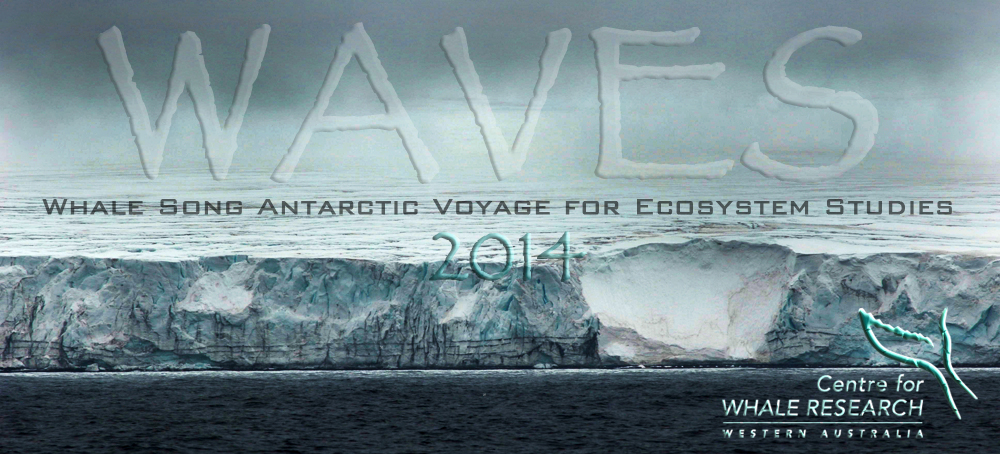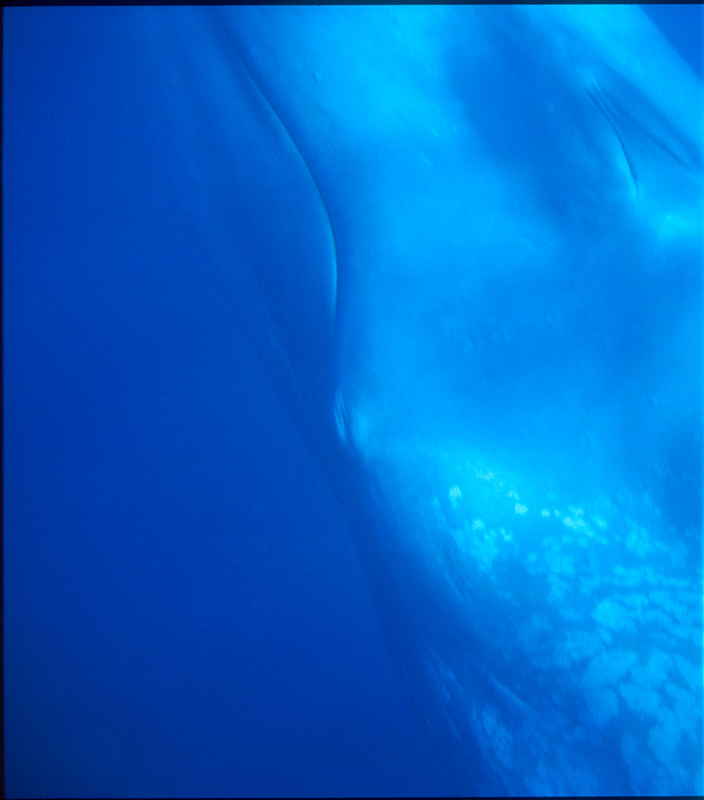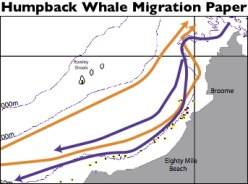Listening vs Looking (Written on Jan 25, 2013)
At 00:06:09 we are at 364 nm SW of Kangaroo Island. Maria and Sacha are documenting the blue tomes at 25 Hz and even southern right whale calls are detected as strong “blobs” of energy near the same 25 Hz frequency levels as the blues.
A slightly off-centre moon shines brightly this morning ! I am so excited, this is the first night spent with the moon on this journey. The light on the water looks molten and a sometimes thin cloud passes by quickly, slightly dulling the moon-cast hue. I love the light of the moon and even a few stars are out and about. The heavy cloud cover of the last five days has been so significant it has absolutely hidden a waxing moon. This is impressive. The cloud last night must have been “breaking”, giving that funny “lightness” in the dark.
We add a new whale each day to our acoustically recorded animals – today a Southern right whale. The coast bays all along Australia’s southern coast are the favoured resting/calving/breeding places for southern right whales. We’re a long way from there now and its not calving season so what are they up to? The STC is now know to be a feeding ground for this most endangered of Australian whale species – no doubt a prime consideration in Tony Burke’s recent decision to halt deep water super-trawling here.
After our prepared lunch of fried rice with Christmas ham (maybe we shall call it January ham) and veggies, salad, prince melon and chocolate log, a few sprinkles of rain move the observers from the fly-bridge to the wheelhouse then to the Portuguese bridge. The sky is 80% cloud cover but now at 1425 we have 50:50 cloud and sky and the sea is a gorgeous sea-green, thus named. The STC is in full bloom, this algae will become food for krill and then for whales. For us, Resty makes yummy chicken or vegetable red curry with steamed rice served in bowls to counteract the 4 metre lumpy swell.
On the encountered-wildlife front, we spot a New Zealand Fur Seal staring intently at us, juvenile Wandering Albatross gliding, White-headed petrel fliting , Black-browed Albatross grumpyily staring, Yellow-nosed Albatross soaring, Shy Albatross gliding and at the end of the day a Sooty Albatross, with all chocolate brown markings circles while we do our sixth CTD station and we are all very interested to see the values of the productivity in this swirl on the edge the STC (Sub-Tropical Convergence).
Whales and dolphins spend <10% of their life at the surface, the remainder in their underwater realm. As our little floating world trundles across the Southern Ocean we realise Whale Song is proving fantastic for these cetacean acoustic surveys. The acoustic detections are winning hands down over the visual observations. I am losing my day job with each new acoustic recording…
Roger Payne writing in “Among Whales”, his autobiography, scientifically discusses that acoustic surveys are the most accurate and effective technique for cetacean population analysis. In fact he estimates an acoustic survey covers 75 times more area than a similar ship board visual survey! Uniquely he outlines a theoretical ship configuration for acoustic towed array deployments and Curt and I realise that he is actually forecasting the design of our fine ship Whale Song, which is indeed super quiet and an awesome research platform. Whale Song was actually built by a friend of Roger’s to assist with Roger’s research. We are very fortunate to have found this ship.
Thus far, we have all kinds of wonderful sound recordings from several dolphin species including encountered short-beaked common dolphins, several possible sightings of a beaked whale and sperm whales but mostly we have acoustically detected and recorded “aliens”, sperm whales, orcas, blues and now southern right whales. The acoustic survey is indeed working perfectly, but perhaps we should change the journey brochure to read, “Seeing whales will be optional”!
We will see whales, of this I am certain. Days and days without whales tests the metal of the crew. So far the outcomes of this acoustic survey are proving the leading scientists totally correct. It is an audio world and we are tuning in!
With sea-green swirls from the STC,
Mich

















No comments yet.